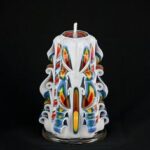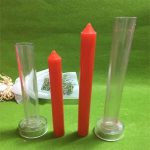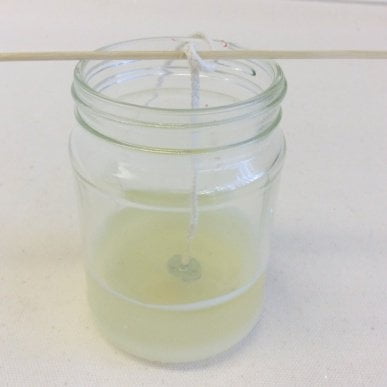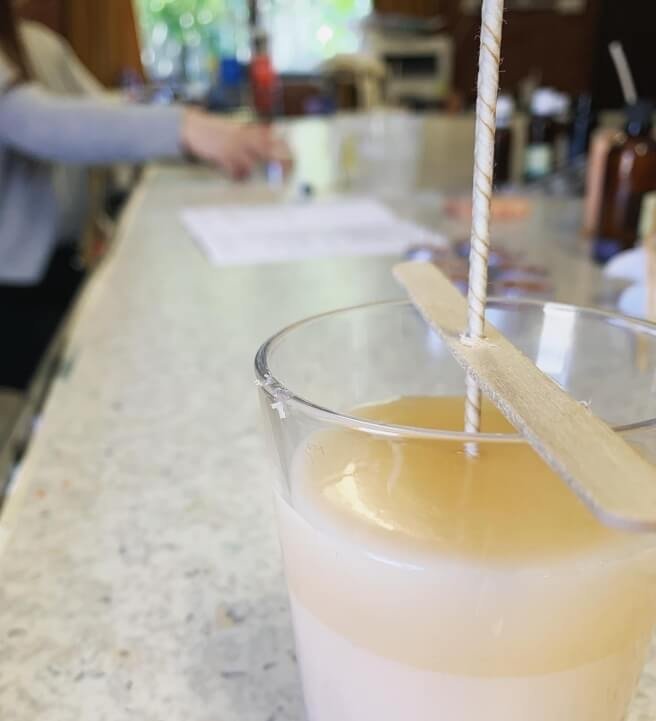Candle making, a craft that has gained popularity in recent years, is often revered for its ability to create beautiful and fragrant items. But how expensive is candle making?
In this article, we will delve into the cost factors associated with this creative hobby, exploring the materials needed and various techniques used. Whether you are interested in candle making as a business venture or simply as a fun and relaxing pastime, understanding the expenses involved can help you make informed decisions about your candle making journey.
Many individuals are intrigued by the idea of creating their own candles but may hold back due to concerns about the cost. To set the context for this blog post, we will address these concerns head-on and examine why the expense of candle making has become a topic of interest. By discovering the various cost factors at play, aspiring candle makers can gain valuable insight into what to expect financially.
One of the key aspects we will explore is the essential supplies and equipment necessary for successful candle making. From different types of waxes to wicks, containers, fragrances, and dyes – each material comes with its own price tag. By discussing both high-end options and budget-friendly alternatives, we hope to provide readers with a comprehensive understanding of how costs can vary depending on choices made during the creation process.
Stay tuned as we embark on this journey to uncovering the truth behind how expensive candle making truly is. With an exploration of different techniques available, considerations for fragrance and color choices, comparisons between DIY and pre-made candles, sourcing tips for materials, hidden costs to watch out for, and insights into turning this craft into a potential business venture – our goal is to equip you with all the information needed to make informed decisions regarding your candle-making endeavors.
The Essential Supplies and Equipment for Candle Making
Candle making requires a variety of supplies and equipment to create beautiful and fragrant candles. In this section, we will discuss the different materials needed for candle making and detail the cost aspects of each.
- Waxes: One of the essential supplies for candle making is wax. There are several types of wax available in the market, including soy wax, beeswax, paraffin wax, and gel wax. The cost of waxes can vary depending on their quality and source. For example, soy wax is generally more expensive than paraffin wax but is considered a more natural and eco-friendly option.
- Wicks: Another crucial component for candle making is the wick. Wicks come in different sizes and materials such as cotton or wood. The cost of wicks can vary depending on their length and thickness. It’s important to choose the right size wick for your candle to ensure proper burning.
- Containers: If you are making container candles, you will need suitable containers to hold the wax. Glass jars or tins are commonly used for this purpose. The cost of containers can vary depending on their size, style, and material.
- Fragrances: Adding fragrance oils or essential oils to your candles can enhance their appeal. However, these oils can add to the overall cost of candle making. Fragrance oils are generally less expensive compared to essential oils, but they may not have natural ingredients.
- Dyes: If you want colored candles, you will need dyes or colorants. Dyes also come in different forms such as liquid or chips that dissolve in melted wax. The cost of dyes can vary depending on their quality and intensity of color.
When calculating the expense of candle making, it’s important to consider all these materials’ costs along with any additional equipment needed like melting pots, thermometers, molds, stirring tools, and packaging supplies. By understanding the cost aspects of the essential supplies and equipment, you can better plan your candle making project and make informed decisions on where to splurge or save.
Considerations for Choosing Candle Making Techniques
When it comes to candle making, there are various techniques that can be chosen depending on the desired outcome and personal preference. Each technique has its own set of materials and costs associated with it. In this section, we will explore some considerations for choosing candle making techniques and evaluate the cost differences and specific materials needed for each technique.
One popular candle making technique is container candles, which involve pouring melted wax into containers such as jars or tins. This technique is often preferred by beginners due to its simplicity and ease of use. The cost aspects of container candles include the price of the containers themselves, which can vary depending on their size and quality. Additionally, other factors to consider are the type of wax used (such as soy wax or paraffin wax), wicks, fragrances, and dyes.
Another candle making technique to consider is pillar candles. These are freestanding candles that do not require a container. The cost aspect of pillar candles includes the price of molds, which can be made of silicone or metal. The quantity and quality of wax needed for pillar candles may also differ from that of container candles. Other factors such as wicks, fragrances, and dyes should also be taken into account.
Taper candles are another option when it comes to candle making techniques. These long, thin candles require specific taper molds or a dipping process to create their shape. The costs associated with taper candles include the price of molds or tools needed for dipping, as well as the quantities and types of wax required. Like other techniques, wicks, fragrances, and dyes should also be factored in.
Overall, choosing a candle making technique involves considering factors such as simplicity, desired outcome, and budget constraints. Each technique comes with its own set of costs related to supplies and equipment needed. It’s important to carefully evaluate these costs along with personal preferences before deciding on a specific candle making technique.
Factoring in Fragrance and Color
Impact of Fragrance Oils and Essential Oils
When it comes to candle making, fragrance plays a significant role in the final product. The choice between fragrance oils and essential oils can have an impact on both the quality of the scent and the overall cost of candle making. Fragrance oils are synthetically made, offering a wide variety of scents at a lower price point compared to essential oils, which are derived from natural sources.
While fragrance oils may be more affordable, some candle makers prefer to use essential oils for their natural and holistic properties. Essential oils tend to be more expensive due to their extraction process and limited availability. However, they are highly concentrated, so only a small amount is needed to achieve the desired scent. This means that despite being pricier initially, essential oils can last longer than fragrance oils.
Whether you choose fragrance oils or essential oils ultimately depends on your budget and personal preference. If you are looking to keep costs down, using fragrance oils can be a more economical option without compromising on scent quality. On the other hand, if you value natural ingredients and are willing to invest a bit more, essential oils can provide a higher-end experience.
The Impact of Color Options
Color is another element that adds beauty and appeal to candles. When considering color options for your candles, you have two choices: invest in higher-quality colors or opt for cheaper alternatives.
Higher-quality color options usually come in the form of liquid or powdered dyes specifically formulated for candle making. These dyes offer vibrant, long-lasting colors that do not fade when exposed to heat or light. While they may be pricier upfront compared to other color options like crayons or food coloring, they require less dye per batch, making them cost-effective in the long run.
However, if cost is a concern, cheaper alternatives like crayons or food coloring can still produce satisfactory results. Keep in mind that these options may not be as vibrant or long-lasting as specialized candle making dyes. Additionally, some coloring agents may affect the burning properties of the wax, so it’s important to test them beforehand.
Ultimately, the decision to splurge or save on fragrance and color for your candles is a personal one. Consider your budget, desired aesthetic, and long-term goals before making a choice. Remember that with proper research and experimentation, you can still achieve beautiful results even with more budget-friendly options.
DIY vs. Buying Pre-Made
When it comes to candle making, enthusiasts are often faced with the decision of whether to create their own candles from scratch or simply purchase pre-made ones. This section will delve into the pros and cons of each option, exploring how they impact both convenience and cost.
One of the primary benefits of DIY candle making is the level of customization it offers. By making candles yourself, you have complete control over the fragrance, color, shape, and size of your creations. This means you can tailor your candles to suit your personal preferences or even create unique gifts for friends and family. Additionally, DIY candle making allows for experimentation with different techniques and materials, providing a fun and creative outlet.
However, it is important to consider the potential drawbacks as well. Making candles from scratch requires time, effort, and a certain level of skill. The process involves gathering supplies, melting wax, mixing fragrances and dyes, setting wicks correctly, and waiting for the candles to cool and set. Consequently, if convenience is a top priority for you or if you lead a busy lifestyle with limited spare time, DIY candle making may not be the most practical option.
On the other hand, buying pre-made candles offers undeniable convenience. Whether purchased online or in stores, pre-made candles are ready to use as soon as they are purchased. This eliminates the need for sourcing supplies, purchasing equipment like thermometers or molds (which could add to costs), or spending hours crafting each individual candle.
In terms of cost effectiveness however, buying pre-made candles may not always be ideal depending on your usage needs. The price point for high-quality store-bought candles tends to be higher compared to what it would cost an individual to make their own. Opting for pre-made can also limit customization options as choices offered by retailers may be limited.
Ultimately, whether deciding between DIY candle making or buying pre-made ultimately depends on your personal preferences, lifestyle demands, budget, and the desired experience you seek from candle making.
Sourcing Materials
When it comes to candle making, one of the key considerations is where to source the necessary materials. In this section, we will compare the prices and availability of candle making supplies online versus local stores. Additionally, we will provide some tips for finding the best deals and discounts from various suppliers.
Online Suppliers
One of the advantages of buying candle making supplies online is the wide selection that is available. Online retailers offer a vast range of waxes, wicks, containers, fragrances, and dyes, allowing you to find exactly what you need for your candle making projects. Moreover, online suppliers often carry specialty items such as unique containers or hard-to-find scents.
Another benefit of purchasing supplies online is the convenience factor. With just a few clicks, you can order all the materials you need from the comfort of your home. This saves you time and allows you to focus on your creative process without having to venture out to different stores.
However, it’s important to consider shipping costs when buying candle making supplies online. Depending on your location and the weight of your order, shipping fees can add up and impact the overall cost effectiveness. Therefore, it’s advisable to compare prices from different online suppliers while including shipping costs in your calculations.
Local Stores
For those who prefer a more hands-on approach or want immediate access to their supplies, local stores can be a convenient option for sourcing candle making materials. Craft stores or hobby shops often have sections dedicated specifically to candle making with a variety of products readily available.
Shopping at local stores allows you to physically examine the products before purchasing them. This gives you an opportunity to assess quality and ensure that they meet your standards. Additionally, engaging with knowledgeable staff in person can be beneficial if you have any questions or need recommendations regarding specific supplies.
While local stores may offer convenience, it’s worth noting that their selection of candle making supplies may be more limited compared to online retailers. This can restrict your creativity when it comes to experimenting with different materials or finding specific items. Furthermore, prices at local stores can sometimes be higher due to factors such as overhead costs. Therefore, comparing prices and assessing the overall cost effectiveness is crucial before making a decision.
Hidden Costs and Potential Savings in Candle Making
When embarking on the journey of candle making, it is important to be aware of the potential hidden costs that may arise throughout the process. While the main supplies such as waxes, wicks, containers, fragrances, and dyes are commonly discussed expenses, there are other factors that can add to the overall cost.
One of these hidden costs includes the necessary tools and equipment for candle making. A thermometer is essential for ensuring the correct temperature of the wax during the melting and pouring process. Additionally, molds are needed for creating unique candle shapes and sizes. Packaging materials, including boxes or bags for finished candles, can also contribute to the expense.
However, there are ways to save on these hidden costs. Some candle makers opt for DIY alternatives instead of purchasing specific equipment. For example, using a kitchen scale instead of a specialized candle-making scale may suffice for most projects. Additionally, finding creative ways to repurpose household items as molds or packaging materials can significantly reduce expenses.
Another potential area where savings can be found is through bulk purchasing. Buying supplies in larger quantities can often lead to lower individual costs per unit. This is particularly beneficial if you plan on making candles in large quantities or intend to turn it into a small business venture. It is important to do some research and compare prices from different suppliers online and locally to find the best deals.
By being mindful of these hidden costs and taking advantage of potential money-saving strategies, candle making can become a more affordable endeavor than initially anticipated. With careful planning and resourcefulness, enthusiasts can enjoy crafting their own unique candles without breaking the bank.
Overall Verdict: While candle making does incur certain costs upfront, especially when first starting out with purchasing essential supplies and equipment, it has potential to be a cost-effective endeavor in the long run when considering factors such as DIY alternatives and bulk purchasing opportunities.
Crafting Candles as a Hobby or a Business
One of the factors that make candle making attractive to many individuals is the potential for turning it into a profitable business venture. However, before diving into the world of candle making as a business, it is essential to conduct a thorough return on investment (ROI) analysis. This will help determine whether the financial investment and time commitment required for starting and running a candle making business are worth the potential returns.
When conducting an ROI analysis for a candle making business, there are several key considerations to keep in mind:
- Start-up Costs: Starting a candle making business will involve certain initial costs, such as purchasing equipment, supplies, and raw materials. These expenses can vary depending on the scale of the operation and the specific techniques and styles of candles being produced. It is important to account for these costs when calculating the potential return on investment.
- Production Costs: In addition to start-up costs, ongoing production costs should also be considered. This includes expenses such as wax, wicks, fragrances, dyes, containers, and packaging materials. Careful planning and sourcing of these supplies can help minimize production costs and maximize profitability.
- Sales and Marketing: Promoting and selling candles requires an investment in marketing efforts such as creating an online presence, developing branding materials, attending craft fairs or markets, and potentially even setting up an e-commerce website. These costs should be factored into the ROI analysis to understand their impact on overall profitability.
It is important to note that while candle making can be lucrative as a business venture, success is not guaranteed. Factors such as market demand, competition, pricing strategy, quality control, and customer satisfaction play significant roles in determining profitability.
For those considering whether candle making can serve as just a hobby rather than a full-fledged business venture, it is crucial to assess personal goals and expectations. Crafting candles as a hobby allows for creative expression and personal enjoyment without the pressure of generating profit. While hobbyists may still invest in high-quality materials, the financial aspect is not necessarily a primary consideration.
In summary, conducting a thorough ROI analysis is essential when considering candle making as a business venture. Starting and running a candle making business involves initial investments, ongoing production costs, and marketing expenses that should all be carefully considered to determine the potential profitability.
On the other hand, crafting candles as a hobby offers personal fulfillment and creative expression without the financial pressure of generating income. Ultimately, whether candle making is pursued as a hobby or business will depend on individual goals, resources, and aspirations.
Conclusion
In conclusion, the cost-effectiveness of candle making ultimately depends on various factors. Throughout this blog post, we have explored the cost considerations of different aspects of candle making, such as supplies and equipment, techniques, fragrance and color choices, DIY versus buying pre-made candles, sourcing materials, hidden costs, and even the potential for turning candle making into a business venture.
When it comes to supplies and equipment, it is essential to carefully evaluate the cost aspects of waxes, wicks, containers, fragrances, and dyes. Choosing less expensive options can help reduce overall expenses, but it is also crucial to consider the quality and desired outcome of your candles.
The specific technique used for candle making also impacts costs. Whether you opt for container candles, pillar candles or taper candles will determine the materials required and thus influence the final expense. It is vital to weigh the cost differences against your intended design and aesthetic preferences.
Another important consideration is fragrance and color. Investing in high-quality fragrance oils and essential oils may increase initial costs but can enhance the overall quality of your candles. As for color choices, opting for cheaper alternatives may be a viable option for those on a tight budget.
Deciding between DIY candle making or purchasing pre-made ones involves balancing convenience and cost. While creating your own candles from scratch allows for custom designs and potentially lower costs in the long run if done as a hobby or small-scale business venture; purchasing pre-made candles offers convenience but may come at a higher price point.
When sourcing materials either online or locally, comparing prices and availability is crucial to finding the best deals and discounts. Keep in mind that while online suppliers may offer competitive pricing options with wider selections; local stores might grant an advantage by avoiding shipping fees.
Furthermore, there are hidden costs involved in candle making that should not be overlooked. Expenses such as thermometers, molds, packaging materials may add up quickly if not accounted for from the start. However, through creative DIY hacks and cost-saving measures, it is possible to reduce expenditure in these areas.
Finally, if you are considering turning candle making into a business venture, it is crucial to conduct a return on investment (ROI) analysis. While the profitability of candle making as a hobby or small-scale enterprise depends on various factors such as market demand, competition, and pricing strategies; it can be a financially rewarding and satisfying endeavor for many.
Frequently Asked Questions
Is it expensive to start candle making?
The cost to start candle making can vary depending on several factors. Initially, there will be some expenses involved such as purchasing equipment and materials like wax, wicks, fragrance oils, dyes, and containers. Additionally, you may need to invest in essential tools like a thermometer, melting pot, and molds if you don’t already have them.
While these upfront costs might seem significant, they are usually one-time expenses. Once you have the necessary supplies and equipment, the ongoing costs become relatively lower as you only need to restock your materials when they run out.
What is the most expensive part of candle making?
The most expensive part of candle making is often the raw materials used for the candles themselves. Quality wax can be a significant expense since it’s one of the primary components in candles. There are different types of wax available each with their own price points such as paraffin wax, soy wax, or beeswax.
Beyond that, fragrance oils and dyes can also add to the overall cost depending on their quality and brand. In some cases, specialized containers or molds made from premium materials can further increase expenses.
Why is candle making so expensive?
Candle making can be more expensive compared to purchasing commercially produced candles due to various reasons. Firstly, crafting handmade candles requires investing in higher quality ingredients as well as additional equipment compared to mass production methods used by larger manufacturers which benefit from economies of scale. Additionally, handmade candles often incorporate more intricate designs or unique fragrance blends that necessitate using more costly raw materials.
Moreover, small-scale candle makers often spend time experimenting with new techniques or perfecting their craft through trial and error which may incur additional costs until desirable results are achieved. Ultimately, these factors contribute to the higher price of handmade candles compared to store-bought ones.

Welcome to my candle making blog! In this blog, I will be sharing my tips and tricks for making candles. I will also be sharing some of my favorite recipes.





